#king temair
Explore tagged Tumblr posts
Text

"Sending this message was important to us. We considered ourselves powerful cultures...."
#fe3h#fire emblem three houses#fe nabateans#fe agarthans#fe sothis#fe arval#fe epimenides#fe3h ocs#king temair#illustration#triptych#stars draws
123 notes
·
View notes
Note
#1
Prompts here: (x)
"come to my arms, love."
She hadn't seen him since their fight this morning. Out of respect for her...gods, what would she even have the right to label him as? Her king, obviously, she was pretty embedded into Unseelie loyalties at this point, but...her partner? Her...her lover?
Tríona sighed, leaning against the kitchen countertop. Maybe she'd only have him as king at this rate, the way she had snapped at him earlier.
"You've found out enough, you don't need to return there anymore-"
"I can't not return, Flannán! I can't give them excuses to go to war, I can't do that to you and every other who has given me kindness while I've been here."
"They've poisoned you more times than you can remember, they've sent assassins after you, you don't need to throw yourself into danger."
"And what?" she had snarled. "Do I simply sit back, do nothing? Do I become the very indolent queen that I hate, locked away for my own good while I could be chasing a truth that could set not only our people free but all of the Tuatha Dé as well? What would you have me do, if you think me that weak?"
Wincing as she remembered her vocal tone, she resumed mixing dry ingredients together. She paused a moment, hearing familiar footsteps behind her. She paid more attention to her bowl as they stopped beside her.
"Might I take care of that while you work on what's next?" Flannán asked.
Tríona bit her lip, then nodded, relinquishing the bowl and whisk to him, trying not to shudder as their fingers brushed in the exchange. Scurrying around, she found the crate of oranges she smuggled from Temair, plucking one out. She grabbed one of the vegetable peelers and began taking off the colorful skin of the orange, leaving the white pith behind.
The two worked in silence, him mixing her dry ingredients methodically and her chopping gently with a knife to make some orange zest, until they both spoke at the same time.
"I'm sorry-" / "I apologise-"
They met each other's gaze, both blinking at each other in surprise. Tríona physically felt the tension melting from her shoulders, like a popped balloon slowly leaking. She gestured at him with her free hand to speak, putting the chef's knife down.
Flannán sighed. "I want to apologise. I do not think you are weak. I...the things that have been wrought on you on my behalf...they horrify me. It scares me that you've been hurt because of what I've forced you into."
She took a long, steadying breath through her nose. She measured out the orange zest, slowly replying, "You know, I had options." Tríona poured it in, gesturing for him to start mixing again. "I didn't have to take your offer."
"...what do you mean?"
Tríona gave him a small, crooked smile. "Everyone was barking up my tree because they thought I was the Seelie Court Druid. I could have slipped away, guilted Robin into taking me back, and we would have never seen each other again. But." She grabbed buttermilk, measured it, and poured it into the mix. "I chose you, knowing full well it would be dangerous. Any path I chose would have been dangerous, you must understand. Escaping here as the Seelie Court Druid with any mishap would've been disastrous, with as thin of ice I was treading back then. But then, I suppose I could have tried to appeal to Maeve again to escape as well. But instead, full well knowing I would be playing double agent against people who had actual experience doing this sort of thing, while I'm just...well, it's not self-deprecating to say I was a village apothecary with not an ounce of experience politicking or the level of deception common where I would tread, walking down this path for you. But. You must know: I knew that going in. I didn't fully get the threat of assassination, of poisoning, of whatever have you, at the time, but I knew I would be essentially going into battle. I chose you, Flannán, and all the risks that entailed. Safety's not a luxury I get to have at this junction."
"Safety is not a luxury, it is a right," Flannán replied. "And you deserve it."
And the way he said it was so solemn and sad that it made her pause. In the middle of kneading the dough into a bread shape, Tríona opened her arms. "Hold me a moment, my heart."
Like a man who had gone without water for days, he leaned down to meet her like she was a waterfall, kneeling on one leg, and wrapped his arms around her. Avoiding getting baking mess in his hair or on his cloak, she resisted stroking him with her hands, instead gently laying her forearms along his shoulders, readjusting her legs so she could support what little of his weight he let himself lean on her for this moment.
"Right here, right now, with you, I get to be safe," she said quietly. "But we both know that to have that in the long term, I have to return and safely take on what I can. I assure you, I'm not the type to ingest poison for fun." She kissed his forehead. "Not when I have you to return to."
"Then one day," he rumbled quietly against her neck, "I want you to come home. I want you to come to my arms, my love, so you can finally be safe."
Tríona blinked rapidly, trying to suppress tears from falling. "I'd like that too. If we both work hard...mayhaps we'll even sleep in past sunrise."
4 notes
·
View notes
Note
Hello yes dnd anon back with another one are there any main locations mentioned in the ulster cycle (example: emain macha)
A few off the top of my head:
Dun Dealgan (Dundalk) – especially in Oidheadh Con Culainn
Mag Muirthemne (specific area Cú Chulainn is from / responsible for) – comes up frequently
Temair (Tara) – seat of the high kings, doesn't come up super often but does come up
Temair Luachra (not Tara, it's in Munster somewhere I think) – mainly in Mesca Ulad
Cruachán (Rathcroghan) – basically any story with Medb will be at least partly here
Áth Fhirdhia (Ardee) – this is where Fer Diad dies
The Táin is heavy on dindsenchas (lore of place-names) so nearly every death is associated with a specific place and many of those places still have those names today. Other texts similarly like to focus on the geography, although I'd say TBC is exceptionally heavy with it for the Ulster Cycle.
These are probably some of the most common / significant ones by virtue of being the ones that came into my head first, but I'm sure there are others!
3 notes
·
View notes
Photo


Mythical Ireland Newgrange tomb and Hill of Tara (Temair), Dublin
The Hill of Tara, known as Temair in gaeilge, was once the ancient seat of power in Ireland – 142 kings are said to have reigned there in prehistoric and historic times. In ancient Irish religion and mythology Temair was the sacred place of dwelling for the gods, and was the entrance to the otherworld. Saint Patrick is said to have come to Tara to confront the ancient religion of the pagans at its most powerful site.
https://mythicalireland.com/ancient-sites/the-hill-of-tara-teamhair/
3 notes
·
View notes
Photo
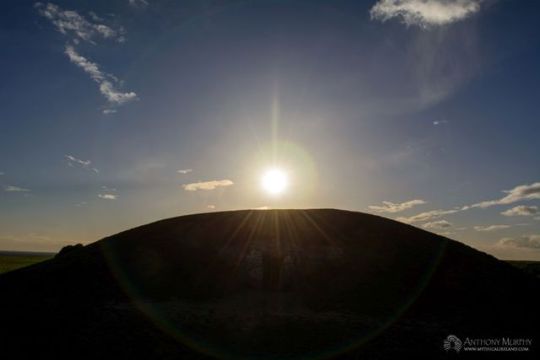

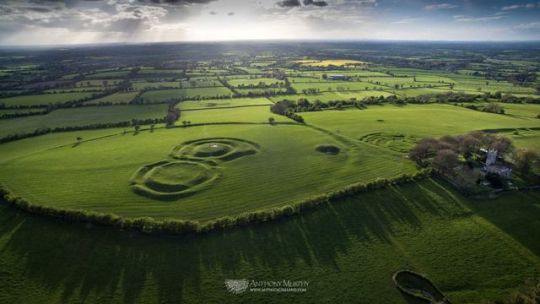
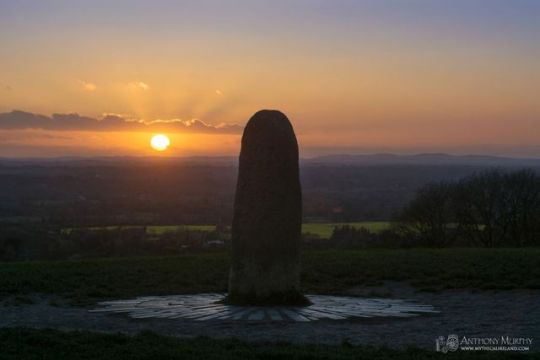
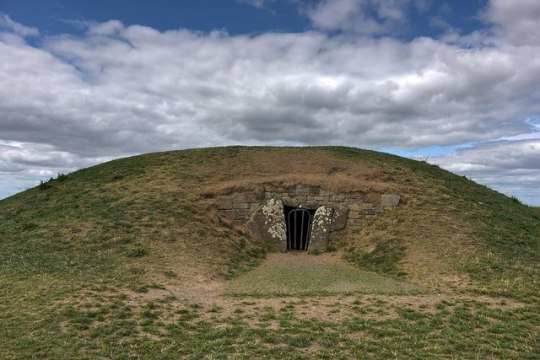
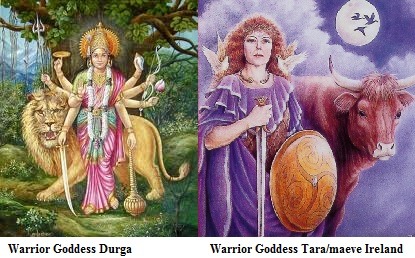
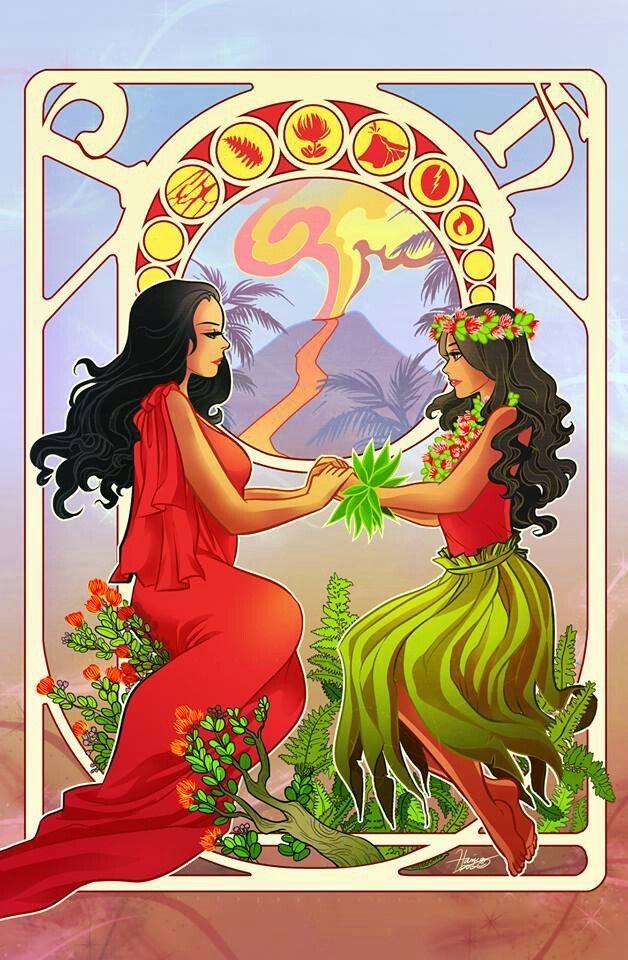
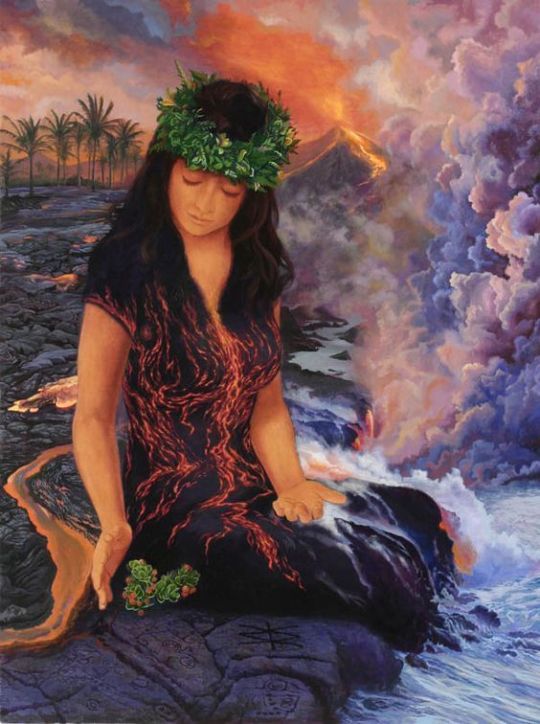
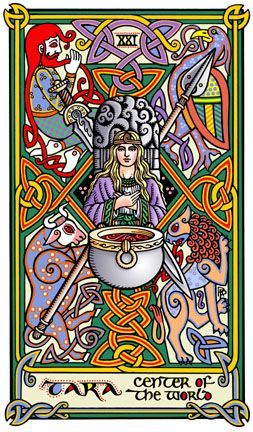
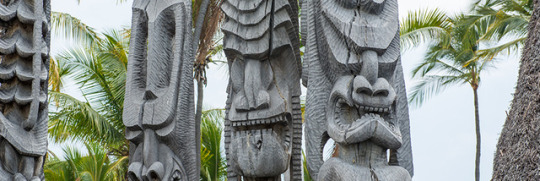
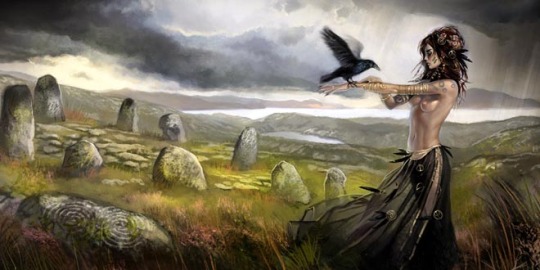
ANCIENT SITES | THE HILL OF TARA – TEAMHAIR
“The Hill of Tara, known as Temair in gaeilge, was once the ancient seat of power in Ireland – 142 kings are said to have reigned there in prehistoric and historic times. In ancient Irish religion and mythology Temair was the sacred place of dwelling for the gods, and was the entrance to the otherworld. Saint Patrick is said to have come to Tara to confront the ancient religion of the pagans at its most powerful site.”

“One interpretation of the name Tara says that it means a "place of great prospect" and indeed on a clear day it is claimed that features in half the counties of Ireland can be seen from atop Tara...Early in the 20th century a group of Israelites came to Tara with the conviction that the Arc of the Covenant was buried in on the famous hill. They dug the Mound of the Synods in search of the Arc but found only some Roman coins.”
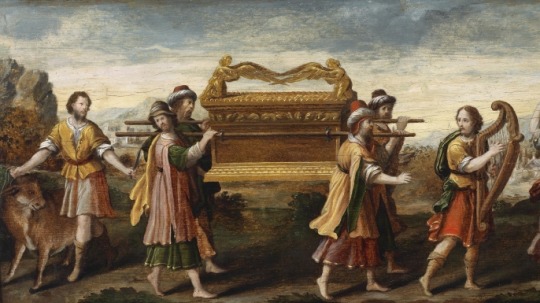
“Sitting on top of the King's Seat (Forradh) of Temair is the most famous of Tara's monuments - Ireland's ancient coronation stone - the Lia Fail or "Stone of Destiny", which was brought here according to mythology by the godlike people, the Tuatha Dé Danann, as one of their sacred objects. It was said to roar when touched by the rightful king of Tara.”
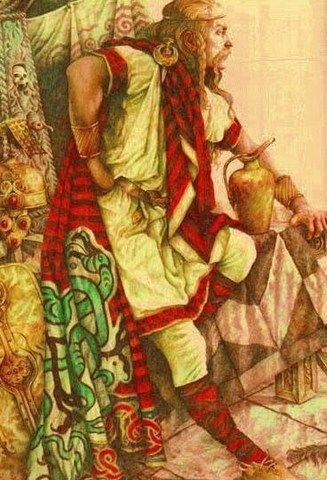
“In the churchyard at Tara there are two standing stones, which are believed to be ancient – remnants of a time when there were many stone monuments on Tara. The taller of the two stones is thought to feature a figure of the Celtic fertility god Cernunnos, and is similar to many of the 'Sheela na Gig' representations found across Ireland. These stones may date to the Neolithic period, although are more likely to have their origin in the Bronze Age.”
(via Mythical Ireland | Ancient Sites | The Hill of Tara – Teamhair)
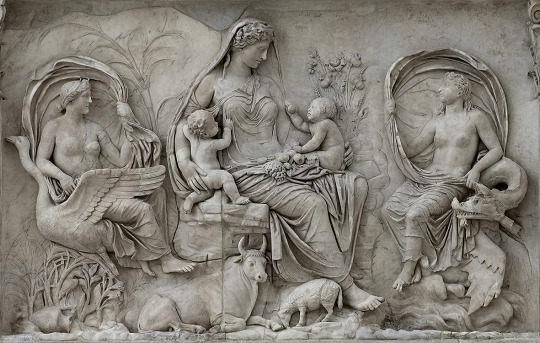
Terra (mythology)
“In ancient Roman religion and myth, Tellus Mater or Terra Mater ("Mother Earth") is a goddess of the earth...She is regularly associated with Ceres in rituals pertaining to the earth and agricultural fertility...Her Greek counterpartis Gaia...the Terra Mater who appears during the reign of Augustus is a direct transferral of the Greek Ge Mater into Roman religious practice...The word tellus, telluris is also a Latin common noun for "land, territory; earth," as is terra, "earth, ground"...In several modern Romance languages, terra (or French terre) is the name of planet Earth. Following post-classical Latin astronomical terminology, Earth is sometimes referred to as "Terra".”

Tara (Buddhism)
“Tara, Ārya Tārā, or White Tara...in Tibetan Buddhism, is an important figure in Buddhism. She appears as a female bodhisattva in Mahayana Buddhism, and as a female Buddha in VajrayanaBuddhism. She is known as the "mother of liberation", and represents the virtues of success in work and achievements. She is known as Tara Bosatsu in Japan, and occasionally as Duōluó Púsà in Chinese Buddhism.
Tārā is a meditation deity worshiped by practitioners of the Tibetan branch of Vajrayana Buddhism to develop certain inner qualities and to understand outer, inner and secret teachings such as karuṇā (compassion), mettā (loving-kindness), and shunyata (emptiness). Tārā may more properly be understood as different aspects of the same quality, as bodhisattvas are often considered metaphors for Buddhist virtues.
Tārā is also known as a saviouress, as a heavenly deity who hears the cries of beings experiencing misery in saṃsāra. Whether the Tārā figure originated as a Buddhist or Hindu goddess is unclear and remains a source of inquiry among scholars. Mallar Ghosh believes her to have originated as a form of the goddess Durga in the Hindu Puranas.”
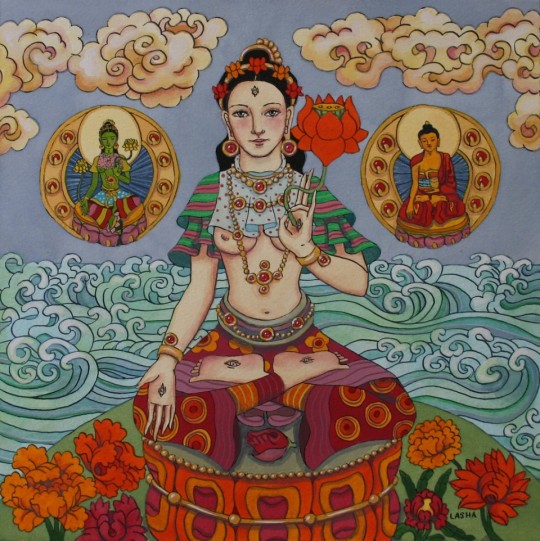
”She eventually came to be considered the "Mother of all Buddhas," which usually refers to the enlightened wisdom of the Buddhas, while simultaneously echoing the ancient concept of the Mother Goddess in India.
Independent of whether she is classified as a deity, a Buddha, or a bodhisattva, Tārā remains very popular in Tibet (and Tibetan communities in exile in Northern India), Mongolia, Nepal, Bhutan, Sikkim and is worshiped in a majority of Buddhist communities throughout the world.
Today, Green Tara and White Tara are probably the most popular representations of Tara. Green Tara (Khadiravani) is usually associated with protection from fear and the following eight obs-curation: lions (= pride), wild elephants (= delusion/ignorance), fires (= hatred and anger), snakes (= jealousy), bandits and thieves (= wrong views, including fanatical views), bondage (= avarice and miserliness), floods (= desire and attachment), and evil spirits and demons (= deluded doubts).”

”As one of the three deities of long life, White Tara (Saraswati) is associated with longevity. White Tara counteracts illness and thereby helps to bring about a long life. She embodies the motivation that is compassion and is said to be as white and radiant as the moon.
Tārā's name literally means "star" or "planet", and therefore she is associated with navigation and travel both literally and metaphorically as spiritual crossing to the 'other side' of the ocean of existence (enlightenment). Hence she is known literally as "she who saves" in Tibetan. In the 108 Names of the Holy Tara, Tara is 'Leader of the caravans ..... who showeth the way to those who have lost it' and she is named as Dhruva, the Sanskrit name for the North Star.”
Tārā also embodies many of the qualities of feminine principle. She is known as the Mother of Mercy and Compassion. She is the source, the female aspect of the universe, which gives birth to warmth, compassion and relief from bad karma as experienced by ordinary beings in cyclic existence. She engenders, nourishes, smiles at the vitality of creation, and has sympathy for all beings as a mother does for her children.”
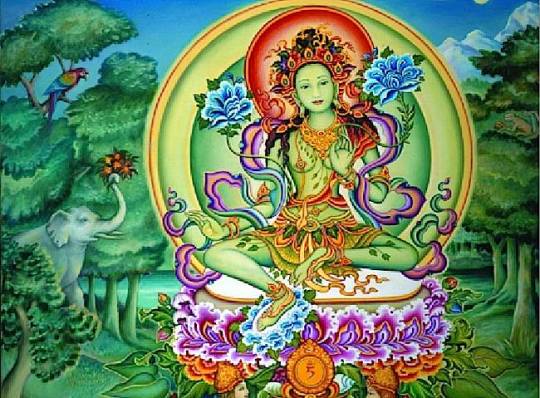
“As Green Tārā she offers succor and protection from all the unfortunate circumstances one can encounter within the samsaric world. As White Tārā she expresses maternal compassion and offers healing to beings who are hurt or wounded, either mentally or psychically. As Red Tārā she teaches discriminating awareness about created phenomena, and how to turn raw desire into compassion and love. As Blue Tārā (Ekajati) she becomes a protector in the Nyingma lineage, who expresses a ferocious, wrathful, female energy whose invocation destroys all Dharmic obstacles and engenders good luck.
Another quality of feminine principle which she shares with the dakinis is playfulness...Tārā is frequently depicted as a young sixteen-year-old girlish woman. She often manifests in the lives of dharma practitioners when they take themselves, or the spiritual path too seriously. There are Tibetan tales in which she laughs at self-righteousness, or plays pranks on those who lack reverence for the feminine. In Magic Dance: The Display of the Self-Nature of the Five Wisdom Dakinis...her playful mind can relieve ordinary minds which become rigidly serious or tightly gripped by dualistic distinctions. She takes delight in an open mind and a receptive heart then. For in this openness and receptivity her blessings can naturally unfold and her energies can quicken the aspirants spiritual development.”

Polynesian narrative
“The Polynesian narrative or Polynesian mythology encompasses the oral traditions of the people of Polynesia, a grouping of Central and South Pacific Ocean island archipelagos...Prior to the 15th century AD, Polynesian peoples fanned out to the east, to the Cook Islands, and from there to other groups such as Tahiti and the Marquesas. Their descendants later discovered the islands from Tahiti to Rapa Nui, and later Hawai‘i and New Zealand. Latest research puts the settlement of New Zealand at about 1300 AD.”

”In some island groups, help is of great importance as the god of the sea and of fishing. There is often a story of the marriage between Sky and Earth; the New Zealand version, Rangi and Papa, is a union that gives birth to the world and all things in it. There are stories of islands pulled up from the bottom of the sea by a magic fishhook, or thrown down from heaven. There are stories of voyages, migrations, seductions and battles, as one might expect. Stories about a trickster, Māui, are widely known, as are those about a beautiful goddess/ancestress Hina or Sina.
In addition to these shared themes in the oral tradition, each island group has its own stories of demi-gods and culture heroes, shading gradually into the firmer outlines of remembered history. Often such stories were linked to various geographic or ecological features, which may be described as the petrified remains of the supernatural beings.”

Tiki
“In Māori mythology, Tiki is the first man created by either Tūmatauenga or Tāne. He found the first woman, Marikoriko, in a pond; she seduced him and he became the father of Hine-kau-ataata. By extension, a tiki is a large or small wooden or stone carving in humanoid form...In some West Coast versions, Tiki himself, as a son of Rangi and Papa, creates the first human by mixing his own blood with clay, and Tāne then makes the first woman. Sometimes Tūmatauenga, the war god, creates Tiki. In another story the first woman is Mārikoriko. Tiki marries her and their daughter is Hine-kau-ataata. In some traditions, Tiki is the penis of Tāne. In fact, Tiki is strongly associated with the origin of the reproductive act.“
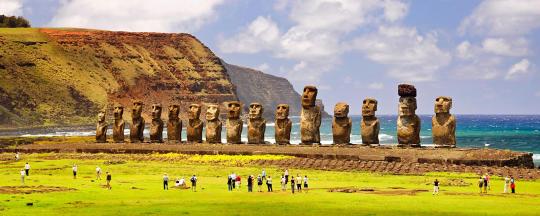
“In one story of Tiki among the many variants, Tiki was lonely and craved company. One day, seeing his reflection in a pool, he thought he had found a companion, and dove into the pool to seize it. The image shattered and Tiki was disappointed. He fell asleep and when he awoke he saw the reflection again. He covered the pool with earth and it gave birth to a woman. Tiki lived with her in serenity, until one day the woman was excited by an eel. Her excitement passed to Tiki and the first reproductive act resulted.
The word appears as tiki in New Zealand Māori, Cook Islands Māori, Tuamotuan, and Marquesan; as tiʻi in Tahitian, and as kiʻi in Hawaiian...In the Cook Islands...Tiki is the guardian of the entrance to Avaiki, the underworld...The entrance to Avaiki (the underworld) is called ‘the chasm of Tiki’.”

What Is the Meaning of Tiki statues?
“Tiki statues were originally carved by members of the Maori tribe as boundary markers for sacred grounds. The name of the statues is derived from the Maori name for the first human male, though the statues most often represent deities. With the introduction of missionaries into Hawaiian society in the early 1800s, Christianity became the dominant religion. Tiki statues have since lost much of their original meaning aside from their historical significance.”
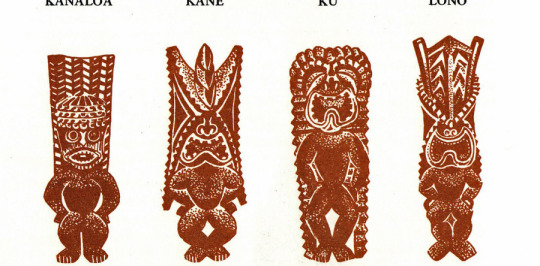
“The statues most commonly represent one of the four significant gods in Hawaiian culture: Kane, Ku, Lono and Kanaloa. Kane is considered the creator of the universe and the ruler of the natural world. Ku is the Hawaiian god of war...Lono is the god of rain and fertility, as well as music and peace. Kanaloa is the god of the sea...A Lono statue is identified by its large, “fertile” belly and jovial smile.
The Ki'i statue at Pu'uhonua o Honauna National Historical Park is one of the largest and most visited Tiki statues in Hawaii. The statue rests at the entrance of a recreated Maori village. The statue is of Tiki, the first human, which explains its humanoid appearance.”
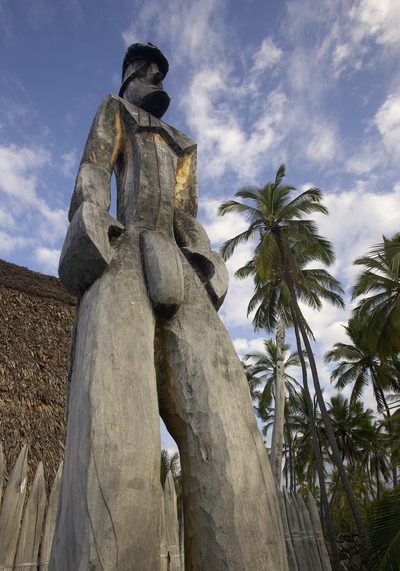
Ti'iti'i
“In Samoan legend, the mythological figure Ti'iti'i appears in legends very similar to those recounting the tales of the demigod Māui, found in other island cultures. In one such legend, which is almost identical to the New Zealand fire myth of Māui, he succeeds in bringing fire to the people of Samoa after a battle with the earthquake god, Mafui'e.
In Polynesian spellings, 't' and 'k' are linguistically linked, and in speech, the 'k' sound is typically used in place of the 't' sound. Likewise, the apostrophe can be used to replace either sounds. Thus, the Samoan Ti'iti'i is comparable to the Gilbert Islands' Tiki-tiki, or Hawai'ian Maui-ki'i-ki'i.”

Rangi and Papa
“In Māori mythology the primal couple Rangi and Papa (or Ranginui and Papatūānuku) appear in a creation myth explaining the origin of the world...In some South Island dialects, Rangi is called Raki or Rakinui...are the primordial parents, the sky father and the earth mother who lie locked together in a tight embrace. They have many children...
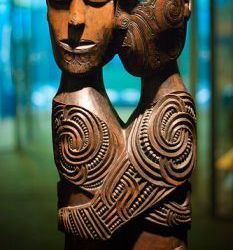
“Ranginui
Rangi ("Sky")
Raki ("Sky") in the South Island
Ranginui ("Great Sky")
Rangi-pōtiki ("Rangi the Lastborn"): possibly another name of Rangi, or a closely allied deity”
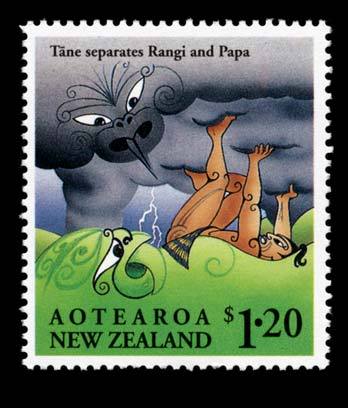
”Papatuanuku
Papa ("world")
Papatūānuku ("world separated"), (Earth), (Mother Earth)
Atea, husband of Papa (primordial parents) in Tuamotuan, Rarotongan and Marquesas genealogies
Wākea, husband of Papa, from Hawaii
Vatea, husband of Papa, father of gods and men in Mangaia, Cook Islands
Anu and Ki, Sumerian deities similar to Rangi and Papa
Uranus and Gæa, Greek deities similar to Rangi and Papa
Dyaúṣ-pitṛ and Pṛthvī-mātṛ, Vedic deities similar to Rangi and Papa”
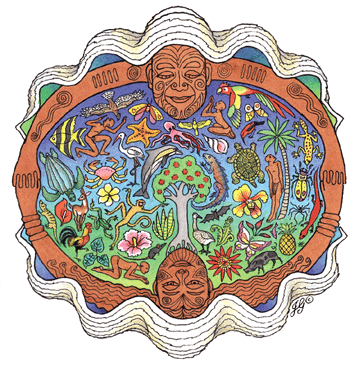
Hawaiian religion
“Hawaiian religion encompasses the indigenous religious beliefs and practices of the Native Hawaiians. It is polytheistic and animistic, with a belief in many deities and spirits, including the belief that spirits are found in non-human beings and objects such as animals, the waves, and the sky.Hawaiian religion originated among the Tahitians and other Pacific islanders who landed in Hawaiʻi between 500 and 1300 AD.”
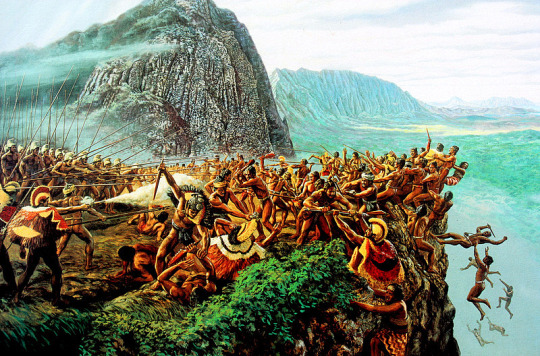
“One Hawaiian creation myth is embodied in the Kumulipo, an epic chant linking the aliʻi, or Hawaiian royalty, to the gods...After the birth of Laʻilaʻi, the woman, and Kiʻi, the man, the man succeeds at seducing and reproducing with the woman before the god Kāne has a chance, thereby making the divine lineage of the gods younger than and thus subservient to the lineage of man. This, in turn, illustrates the transition of mankind from being symbols for the gods (the literal meaning of kiʻi) into the keeper of these symbols in the form of idols and the like. The Kumulipo was recited during the time of Makahiki, to honor the god of fertility, Lono.”
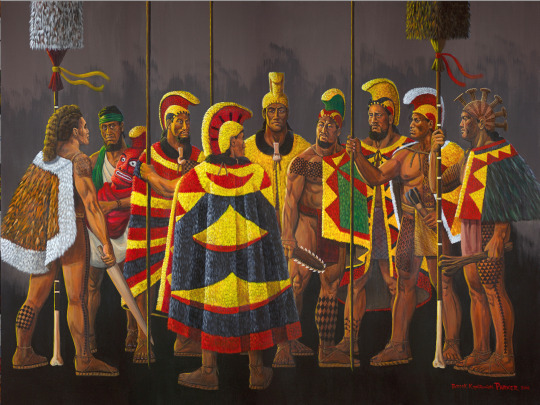
THE HOME OF THE ANCESTORS
“The ancestors of the New Zealand Maoris have a definite ancestral home from which they came to New Zealand. This bears the name Hawaiki which is the same as Hawai'i...The Hawaiians, however, had one word for all outside lands. This was Kahiki or Tahiti. If any one sailed to any far-away place, east or west, he went to Kahiki...Ke-alohi-lani (the shining or glorious heaven) was the where the vivid imagination placed all things beautiful. It was the ancient land to be desired. Another interpretation, however, makes it the land of shining clouds, probably lit by volcanic fires, reflecting the glory of the burning flames.”
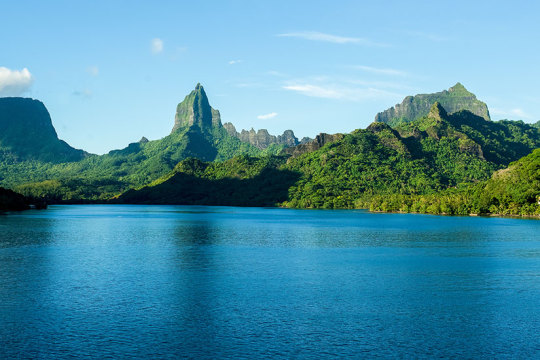
Hawaiki
“Hawaiki is the traditional Māori place of origin. The first Māori are said to have sailed to New Zealand from Hawaiki. And in Māori mythology Hawaiki is the place where Io, the supreme being, created the world and its first people...Hawaiki represents all that is good and powerful. It is a mystical place, where people turn into birds or descend to the underworld...In some traditions, the supreme being Io created Hawaiki. The gods are believed to live there, including the trickster demigod Māui, whose deeds are famous throughout Polynesia. The first woman, Hineahuone, was fashioned from the soil of Hawaiki.”
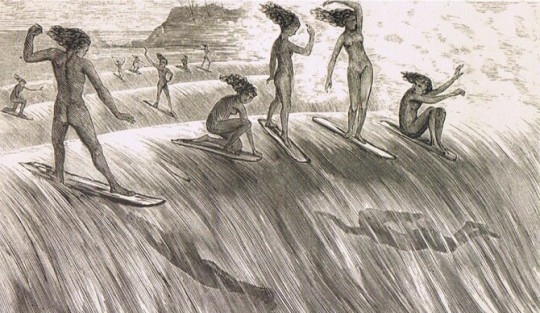
“S. Percy Smith...In his book Hawaiki, the original homeland of the Maori (1904), Smith advanced his theories as to the physical location of Hawaiki. He suggested that islands such as Savai‘i in Samoa, Hawaii and even Java near Indonesia were actually Hawaiki in localised forms...Some writers went further, arguing that Māori origins could be found in India and even Mesopotamia, the ancient region of present-day Iraq. Alfred K. Newman’s Who are the Maoris? (1912) is an example of a work that argues for the Indian origins of Māori people.”
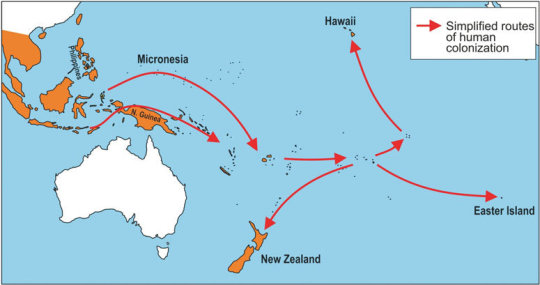
(via Hawaiki | Te Ara: The Encyclopedia of New Zealand)
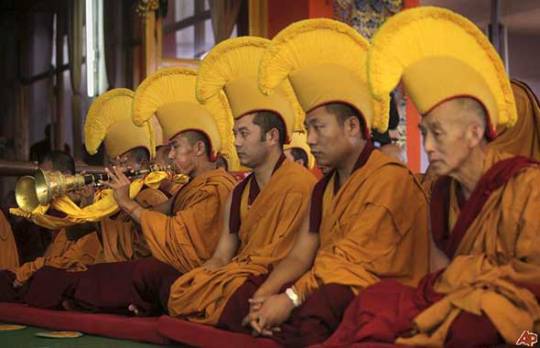
#hilloftara#irishgoddess#stpatrick#terramater#motherearth#buddhistgoddesstara#mothergoddess#fertilitygod&godess#polynesianislands#rangi&papa#tiki#hawaiki#tiitii#kiikii#tahiti#kahiki#kii&lailai#1stman&woman#hawaiianmythology
0 notes
Note
can you tell us more abt Temair??
YES. Omgs yes I will talk about Temair.
So before I can talk about Temair I do need to talk about my own personal Nabatean lore. So how I have it set up is that there are basically two kinds of Nabateans and I do think there is some extrapolation which can be made from canon to support this assessment. First, I will say that canon does make it very clear that the Nabateans as a whole were created in Fodlan, the first Nabateans were created by the Goddess using her blood, and all Nabateans are known as the Children of the Goddess.
So that being said, the vast majority of the Nabatean population are common Nabateans which lack a defined Crest while they are still able to transform, have exceptionally long lives, and vast control over magic.

This an asset from Hopes that I believe shows an average Nabatean Crest Stone which is notably lacking a Crest despite it having immense power and the capability of turning people into Demonic Beasts. I do think that common Nabateans still possessed a variety in their forms and the magics they were connected to, but they either lack a connection to a Crested Bloodline or are distantly related enough that it is slight. Compare that to a Crest Stone of the other group of Nabateans; the Divine Dragons of Fodlan.

Every Crest Stone that is directly correlated to a Relic or any of the Crests we see in game, in my view, are from a small subset of the Nabatean population who are the direct descendants of Sothis. As-in her blood children. Gods in their own right through at minimum their divine mother. While all Nabateans are Children of the Goddess only few can claim direct heritage from her and only a handful could be classified as Divine Dragons. With how I write Sothis "divine" here is not a euphemism or poetic for a very strong dragon--I mean they are gods in their own right. Completely immortal, strong connections to the land or natural phenomenon, supernatural beings of immense power who were born in the mortal world.
(Btw I hold a very polytheistic view of Fodlan's world, so there are many many gods alongside Sothis and the Divine Nabateans)
These Nabateans do have their own bloodlines which causes their unique Crests/Dragon Signs to be passed down through their descendants for a long time (this trait does carry on in the humans who took them with some caveats). All of the Crests are expressions of the Crest of Flames so their power very much all flows back to Sothis as the supreme goddess.
Now, I can yap about Temair!

So Temair is, in my lore, the first born of Sothis (alongside his twin my currently unnamed Earth Dragon; no they aren't Cichol) when she alighted upon the continent of Fodlan over 20,000 years ago (if you wonder where I got that number it's from one of the dev interviews I'm fairly certain). He is the son of Sothis and the land deity of Fodlan's north the Lion God Faerghus (at least this is the name the modern people have given him ofc).
His main epithet is that of The Justiciar; he who holds the scales of justice. I won't go into his role in pre-Calamity Fodlan as that's a long conversation before we even get into more familiar territory; however I will say this:
Temair was one of the leaders of Nabatea alongside his mother, divine siblings, and mortal councils of the halidom well before the calamaity caused by the Agarthans. After the long war and the resulting calamity Temair essentially took over in Sothis' stead as ruler of Nabatea being oldest of Divine Dragons. His strength and power went somewhat beyond his other siblings and this is reflected in Areadbhar, Atrocity, and how the Crest of Blaiddyd works in general.
After the calamity and the restoration of Fodlan, Temair kept the remains of Nabatea in Zanado safe for centuries as they watched life return to the land their mother died to save. He watched over his younger siblings (especially Rhea--Sothis' youngest--Indech and Macuil) as they slowly rebuilt their home within and below the Ogham Mountains and kept the returning humans away for the time being out of mistrust.
Temair was not the first of the Nabateans or the Divine Dragons to venture out into the rest of Fodlan during the pre-Empire times, but he did leave a lasting legacy well into modern times. Long story short: he founded Faerghus; not the Kingdom but the ethnic groups which would become the Faerghal. Myths within Faerghus say it was the Father Lion who guided the people of the north and gave them their souls; and it was Temair Teutates who united the Faerghal tribe and founded Fhirdiad as patron and protector.
Temair was the first King of Fhirdiad; and this city state was the first to be allied with Nabatea and the first time humans heavily interacted with the Nabateans since the Calamity. He was the one to write much of Faerghus' first legal codes, created the bedrock of their governance structure, revived Nabatean magical practice with new knowledge from the Faerghal, influenced the entire Faerghalig language family and their pre-CoS religious beliefs/practices, built the foundations of Fhirdiad, etc etc. He ruled for a long time during a period most people remember in legends as one of prosperity. To include a snippet from something I wrote awhile ago:
Temair : the name of a deity local to the Fhirdiad region. Much of my information comes from the Royal Library of Fhirdiad in the form of written records of oral traditions before rise of Saint Seiros and accessed via royal permission. Records are incomplete as many were damaged during the Burning of Fhirdiad IY 739. This deity is one of the guardians of Fhirdiad and said to be an ancestor to the Blaiddyd lineage. Temair was a ruler of Fhirdiad during the time of the mysterious Old Ones and the Age of the Gods, considered a divine king who lived a longer life than even the Heroes and Saints. Son of the All-Mother and the Father Lion Faerghus, and the progenitor of one of the lineages that would become Clan Blaiddyd with Elite Blaiddyd himself a descendant. He is often depicted alongside dragons or taking the form of a dragon. From what I can gather from the records, legends state he left Fhirdiad for the "mountains of misty light" and never returned.
Temair is often associated with storms, fertility, one of Faerghus sovereignty deities alongside Saint Loog, and is seen as a father to Kingdom despite it being founded long after his death. So let's talk about his death.

Temair was murdered by his son Blaiddyd and turned into the Relic Areadbhar. Genuinely, he had believed the threat of the Agarthans to have long passed as they hadn't been seen in Fodlan for thousands of years at this point. He did not account for the worst of them to have figured out soul magic and for a man named Nemesis to find Epimenedes, Thales, and co in Shambhala. He had been called back from Fhirdiad in a panic by his siblings who found the Holy Tomb and their mother's corpse desecrated. It wasn't immediate, but sometime later Nemesis, the Agarthans, and a small handful of his most loyal thieves came to Zanado and massacred the people while hunting down the Divine Dragons. Temair was one who fought valiantly to save as many as he could and give his people and family time to flee, but even he was wounded horribly by Nemesis and the Sword of the Creator.
While some survivors fled Fodlan entirely or hid away, others followed the wounded Temair back to Fhirdiad to regroup and attempt to survive. He wasn't expecting for one of his own children to have fallen under the promise and thrall of Nemesis and the Agarthans. We don't have time to get into him, but Blaiddyd was a very troubled man and he fucked up royally. Despite holding out for as long as they could, the Agarthans did attack Fhirdiad and set about the first massacre in that city's history. Nemesis, Blaiddyd, and the Elites used this opportunity to present themselves as "saviors" and "liberators" who defeated the evil ones who attacked Fodlan and killed their god by "routing" the Agarthans. It was pre-planned (yet not all the Elites were aware of the specifics, long story).
Blaiddyd used his father's blood to enhance his own weak powers and desecrated his bones to create the lance Areadbhar and other Relics which have either been lost or were interred with Temair later. This is why Areadbhar is said to burn with a never ending hatred, why the lance twitches and writhes in agony, because he is not aware anymore but he sure ain't resting in peace. Indech was later the one to kill Blaiddyd and reclaim that piece of his brother's body, and he kept Areadbhar within his lake for centuries before Loog came to claim it.
His legacy is mostly remembered via mythology and the oral history of Faerghus because many of the records from his rule have been destroyed over the centuries or hidden away. The Faerghal who live within the Kingdom of Fhirdiad remember him fondly and there is still some active worship of him, but Loog and other gods/the Goddess are more prominent in the roles he once filled. His name, and Saint Cichol's, is brought up in the prayer before any court proceeding and his images are rarely seen around the city.
I'll leave off with this little thing I wrote to my friends about his relationship with the Saints:
Just,, Temair who was really close with Indech. Getting into swimming competitions with his little brother he would end up losing. They could go toe to toe during spars at least. Indech was always jealous his brother also had wings to fly. Getting to hold little Seiros and being at least a 1/3rd of her moral compass because of course The Justiciar would know how to answer her little moral quandries. He wasn’t in Zanado all the time, especially when the war fell upon them, but he was there when Seiros needed him most. Especially after they lost their mother. Cichol was a distant guardian for his little sister. Earnest and strong with a moral center that Temair respected. Temair goaded him into sharing his stories, it made the occasional performances for younger Nabateans at the feast table more fun with a partner. It was through accompanying Temair to Enbarr years after the Calamity that Cichol got introduced to his sister. Temair never let him live down the look he gave the Light Dragon even after Crethleann was born. He was the first to reach out to the new humans. Tried to convince Macuil to give them a shot, reminding him of their allies and everyone who fought by their side despite how the Agarthan leaders deceived them. "Those dastards are gone, Macuil. They ensured their own deaths. The young ones are blameless, and Mother would wish us to forge something anew." "....I will attempt. I am not sure if they are deserving of our reciprocity after how the last ones repaid us for welcoming them to Fódlan's shores....but I guess you are right." "I always am."
I hope that answers your question!
#fe3h#fire emblem three houses#fe3h oc#the holy kingdom of faerghus#fe3h nabateans#sothis fire emblem#king temair#fe3h meta#fe3h worldbuilding#original character#stars rambles#i love him if that's not clear
13 notes
·
View notes
Text
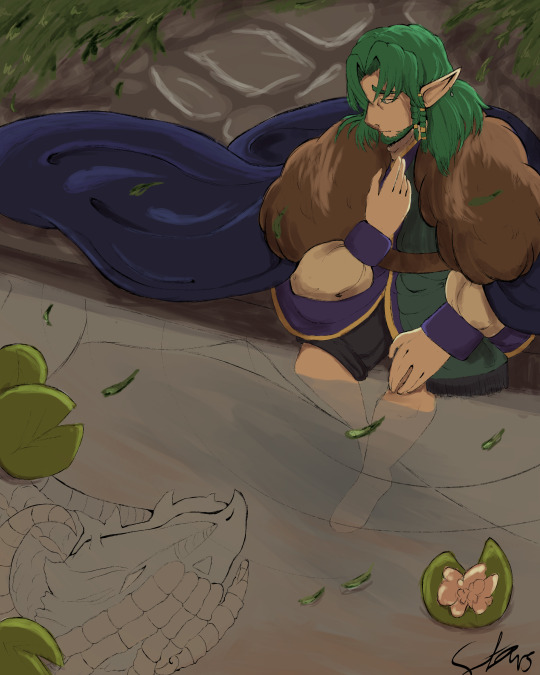
"I'll tend to the flame, you can worship the ashes" For FE OC Week: Relationships. My Nabatean oc, Temair, contemplating a vision of his younger sister Seiros while resting in the reflection pool of his castle in Fhirdiad. Maybe he can see a small glimpse of the future. Maybe he's simply thinking of how much they've lost in many years since the calamity...
#fe3h#fire emblem three houses#fe nabateans#fe oc week#very late post#rhea fire emblem#the immaculate one#king temair#fe3h oc#illustration#digital art#stars draws
68 notes
·
View notes
Text
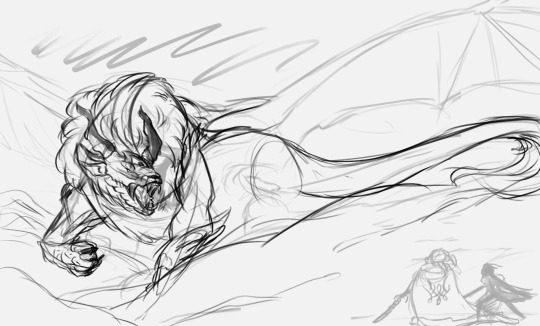
Wip of my boy Temair and a battle he does not win ;-;
#fe3h#fire emblem three houses#fe nabateans#king temair#the grim dragon#dragons#fe3h ocs#fe agarthans#nemesis fe3h#blaiddyd fe3h#they're in the corner#art wip#stars draws
16 notes
·
View notes
Text
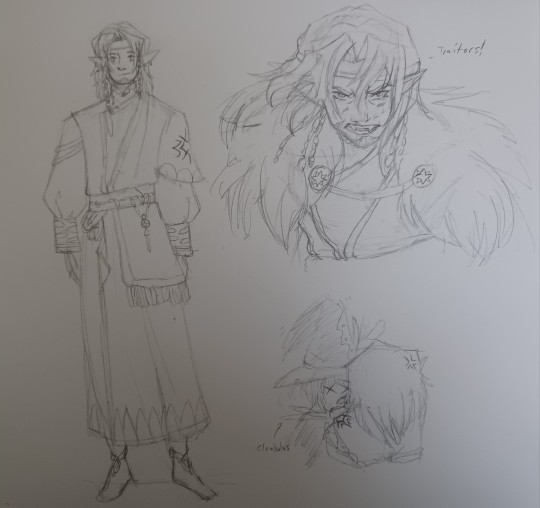

Woe! Nabatean be upon ye! His name is Temair, and he was one of Sothis' older direct children.
Legends say his father is the lion god Faerghus. Accounted for in the oldest Faerghal myths as a saint-king of Fhirdiad until his mysterious leave and subsequent disappearance--where his descendant Elite Blaiddyd would rule in his stead. In a few surviving folktales, it appears he held a fondness for the spirit residing in Lake Teutates.
#fe3h#fire emblem three houses#fe nabatean oc#fe3h oc#king temair#bonus points for anyone who can guess what happened to him#fe nabateans
25 notes
·
View notes